Here's my 9 ways to keep a dog warm at night dog because even their beautiful, thick fur isn’t enough to protect them from the relentless winter cold. Let's check them out…
JOIN MY FREE REACTIVITY CLASS
Finding the best ways on how to keep your dog warm at night before winter starts is a must for every dog owner.
There’s a common misconception that a dog’s fur is enough to keep them warm during the night, including really cold winter nights!

Having this assumption can unintentionally expose many dog breeds to the hazards of dropping temperatures, including joint pain, arthritis, frostbite, and hypothermia.
Dog care for winter calls for two major things: keeping the dog warm indoors and outdoors.
Fortunately, there are practical measures you can take to ensure your pooch is snug and safe, even during winter nights. Read on.
Key Takeaways:
- Although your dog has fur, it is not enough to protect them from the chill of the cold. Some of the best ways to warm up dogs at night include bundling them up, elevating their bed, or even cuddling with them.
- If dogs are cold, they will show it. Some of the signs that your dog is cold includes a tucked tail, or paws that are cold to the touch.
- Some dog owners hesitate to bring their dogs indoors during the cold for fear that the dogs will misbehave. The Dog Calming Code™️ can help with that.
LEARN THE DOG CALMING CODE (FOR FREE)
Table of Contents:
- Do Dogs Get Cold at Night?
1.1 #1: Breed
1.2 #2: Age
1.3 #3: Thickness and Length of Coat
1.4 #4: A Dog’s Height - Cold Dog: Signs That You Need To Keep Your Dog Warm at Night
2.1 Sign #1: Shaking and Shivering
2.2 Sign #2: Continuous Whining and Barking
2.3 Sign #3: Restless While Looking for a Corner to Lie Down
2.4 Sign #4: Hunched Posture, Tucked Tail
2.5 Sign #5: Lethargic Than Ever
2.6 Sign #6: Cold to Touch
2.7 Sign #7: Curled Into a Ball - How to Keep a Dog Warm at Night When They’re Indoors
3.1 Get Your Dog Off the Ground, and Use Heated, Raised Dog Beds and Mats
3.2 Surround Them With Blankets Using The Doughnut Ring
3.3 Keep Them Eating with Heated Dog Bowls
3.4 Add Stop Drafts to Doors
3.5 Cuddle Up
3.6 Consider Dog Pyjamas - How to Keep a Dog Warm at Night When They’re Outdoors
4.1 Build an Insulated Kennel
4.2 Provide Safe and Proper Shelter For Nights When It Gets Even Colder
4.3 Winter Jacket and Dog Boots - Winter Care Tips for Dogs: How To Keep Dog Warm and Safe During the Winter Season
5.1 Be Gentle with Exercise
5.2 Consider the Effects of Snow and Ice on Your Dog
5.3 Be Careful Not to Leave Dogs Around Open Fires
5.4 Keep Harmful Winter Chemicals Away from Your Dog’s Reach - What If My Dog Refuses to Come Indoors During the Night?
- Worried About The Way Your Dog Will Behave Indoors?
Do Dogs Get Cold at Night?
Do dogs still get cold despite having their layer of fur?
Here’s the truth: your dog’s thick fur is not enough to keep your pet warm for all seasons. It’s important to note that several factors can affect a fur’s ability to keep dogs warm during the night.
These factors include:
#1: Breed
Dogs have different levels of natural insulation against cold weather, depending on their breed.
Some breeds, like Huskies and Malamutes, are bred for cold climates and have thick double coats that provide excellent insulation.

In contrast, short-haired breeds like Greyhounds may be more susceptible to the cold due to their lack of insulating fur.
#2: Age
A dog's age can affect their ability to stay warm.
For example, puppies and senior dogs are generally more vulnerable to extreme temperatures because their bodies couldn’t fully regulate the temperature to stand the cold.
Puppies also may not have fully developed fur. On the other hand, senior dogs have thinner coats and reduced metabolism.
FREE REACTIVITY MASTERCLASS
#3: Thickness and Length of Coat
The thickness and length of a dog's coat can vary widely even within the same breed. Dogs with thicker and longer coats tend to have better protection against the cold.
However, grooming practices can also influence the effectiveness of their coat. Regular grooming to remove tangles and mats can help maintain insulation.
#4: A Dog’s Height
A dog's height can affect how close they are to the ground, which can impact their exposure to cold surfaces. Smaller dogs are closer to the ground and may feel colder because they come into contact with colder surfaces more often than taller dogs.

Additionally, shorter-legged dogs may have a harder time walking through deep snow.
Also very important to note that other body parts of dogs with lesser fur including ears, tail, nose, and paws are still very much exposed to cold.
Cold Dog: Signs That You Need To Keep Your Dog Warm at Night
Does your dog need bundling up? The best way to keep your dog warm during the winter nights is to know the signs of a cold dog (example: dog curling up in one corner, or ears tucked in).
Take cues from what your dog is doing when it’s chilly; here are some common signs of a cold dog that tells you it’s time to warm them up… fast.

Sign #1: Shaking and Shivering
Not all dogs will ride the cold like superheroes. When the freezing temperature becomes too much, many dogs will show this through shaking and shivering.
Sign #2: Continuous Whining and Barking
You’ve given the things that soothe them when they’re restless, but they’re still whining and barking. Try wrapping them in blankets and see if there’s a difference.
Sign #3: Restless While Looking for a Corner to Lie Down
Pup parents and dog owners, if your dog can’t settle in one spot and is constantly snuggling from one corner to another, it can be a telltale sign that their beds are too chilly for comfort.
GET MY 5 GOLDEN RULES FOR FREE!
Sign #4: Hunched Posture, Tucked Tail
Now this one’s quite easy to miss. Before your big and small dogs start making a fuss about the cold, they would first try to warm themselves up using their body heat.
If you notice your dog curled up more than usual, it’s best to cover and warm them up as soon as possible.
Sign #5: More Lethargic Than Ever
A cold dog is sluggish, has reduced energy levels, and is less enthusiastic about their usual activities. The reason for this: the body is diverting energy towards keeping warm, which can leave your dog feeling less active.

Sign #6: Cold to Touch
One of the most direct signs that a dog is cold is if they feel cold to the touch. You can check their ears, paws, or the tip of their nose. If these areas feel cold or even icy, it's a clear indication that your dog is experiencing the cold weather and might need some warmth.
Sign #7: Curled Into a Ball
Dogs often curl into a ball when they are cold as a natural instinct to conserve body heat. This behavior is more commonly observed when a dog is sleeping or resting in a chilly environment.
Whether you caught the signs of a cold dog early on, or it took a while to figure out the concern, there are simple, easy steps on how to keep a dog warm at night and during the day.
REVERSE REACTIVITY (FREE WEB CLASS)
How to Keep a Dog Warm at Night When They’re Indoors
Sturdy walls and thick carpets won’t stop your dog from feeling the effects of the seeping cold. The great news is that it doesn’t need any complicated process to make sure your dog is warm indoors.

Keep the cold at bay — here are different ways to keep dogs warm while they’re staying in.
A quick note: If your dog is used to staying outdoors, there will be adjustments involved like ensuring the dog won’t trigger other pets or cause a ruckus indoors.
Additionally, you’ll deal with a lot of resistance like a dog scratching the door because they don’t want to be indoors.

Transitioning from the outdoors to the indoors is a big adjustment for you and your dog. You worry about how they will behave inside the house, and they’re confused about how to navigate the new space.
Both of you might find the situation extremely frustrating.
The transition will call for lots of patience and communication with your confused, bewildered dog.
I always recommend dog parents to go back to the basics of communicating with their dogs to help them speak to their pets without getting stressed and exasperated.

Once you’ve successfully got your dog in, here are some ways you can keep your dog warm inside the home.
Get Your Dog Off the Ground, and Use Heated, Raised Dog Beds and Mats
The floor can get extremely cold during the winter; your dog can suffer body heat loss when they sleep on the ground. Consider getting heated dog beds elevated from the ground for your dog’s warmth, safety, and comfort.

If your pup isn’t the type to stay on the bed, heated dog mats are another option. Look for the thicker ones that can serve as a protective cushion between your dog and the floor.
REACTIVITY SOLVED (NO FOOD, NO FORCE)
Surround Them With Blankets Using The Doughnut Ring
Heated dog beds — with their added insulation — are nice. However, if you don’t have one, you can get creative and create a doughnut ring out of blankets.
These could be old sacks, hay, or soft, beautiful blankets! Wool blankets will keep much more heat than most. This may even be an old sweater you’re thinking of throwing away!
For maximum heat retention, place the blankets in a doughnut shape with space for your dog to curl up in the center. With protection from the cold on all sides (and underneath) they only lose heat upwards rather than in all directions.

When your dog sleeps inside a doughnut ring, they can rest without risking life-threatening heat loss and a drop in body temperature.
Keep Them Eating with Heated Dog Bowls
Munching up an adequate amount of food is crucial to your dog’s comfort during the winter months. Dogs get an extra shield from the freezing cold when they have enough calories.
Since you’re most likely to place the food on the ground, swapping traditional bowls with heated dog bowls is a great idea. Food gets cold fast during the cooler nights, and cold food is unappetizing to dogs.
As heated dog bowls help keep dog food warm, your beloved pet will always have access to ready-to-eat food that will fill them and fuel the much-needed calories to keep them warm.
Add Stop Drafts to Doors
We had talks with dog owners who were once left perplexed with their cold weather dilemma. They’ve done everything — get heated blankets, made a dog nesting bed, and stacked up blankets for the dogs to use, but their pets still ended up shivering the morning after.

The culprit: the small, unclosed gaps between the door and the floor.
Although the cold coming in from these gaps is no big deal to people, it’s a different story for dogs.
Door drafts block cold air from swooshing into the room where you are trying to keep dogs warm. As this step is pretty easy to overlook, consider adding the drafts before prepping other cold season essentials for your dogs.
JOIN MY FREE REACTIVITY CLASS
Covering Them With a Big, Warm Blanket Before They Sleep
When I put my dogs to bed at night, I gently drape a sizable blanket over them. It's thin enough for them to breathe comfortably, yet it keeps them warm and toasty underneath, almost like a spacious tent. They're so content beneath the blanket that they rarely budge until morning comes.
Consider Dog Pyjamas
Pyjamas are a staple for people when winter comes, and an extra layer against cold is needed. Imagine what dog pyjamas can do for your dogs to keep them warm?
These dog pyjamas come in any size, but short-haired dogs who need additional coverage benefit most.

How to Keep a Dog Warm at Night When They’re Outdoors
Although keeping dogs warm indoors during the chilly season is the better choice, circumstances like behavioral issues, shedding, or your dog’s preference (working dogs prefer the outdoors because they can stay with their pack) can push you to allow dogs to stay outdoors.

If you are wondering how to keep a dog warm at night if they are staying outdoors, I have good news: there are some steps you can take to help them feel warm and comfortable all through the night.
GET THE DOG CALMING CODE™
Provide Safe and Proper Shelter For Nights When It Gets Even Colder
Many dog breeds, including pack animals and working dogs, are low-maintenance — they would gladly settle in a kennel without any problem. It gets challenging when they not only need protection from chilly nights but from pouring rain and snow.
Every dog needs an outdoor shelter from the rain so if you haven’t already put some sort of shelter together, then today is the day. A decent dog shelter that will keep dogs warm at night includes a sturdy and leak-proof roof, an extra layer of insulation on the walls, and a bed or small stacked mattress that will elevate your dog from the ground.

If you’re letting your dogs sleep in the garage, install some heat lamps for additional warmth during the winter.
Winter Jacket and Dog Boots
The jacket and boots ensemble is just what big and small dogs need when taking winter walks where the cold winds blow incessantly.
Choose a snug jacket that can protect them from the cold without getting in the way of their mobility.
Their sensitive paws also need cover and protection, so it’s best to make them wear snow boots whenever you go outside.
Most dogs aren’t fans of dog jackets and dog boots, but they get by eventually.
Winter Care Tips for Dogs: How To Keep Dogs Safe During the Winter Season
Be Gentle with Exercise
Begin your dog's walks at a gentle pace to allow their muscles to warm up gradually. On particularly cold days, consider indoor exercise options.
Consider the Effects of Snow and Ice on Your Dog
Be mindful of the potential harm that snow and ice can cause to your dog's paws, including chapping, cracking, or injury to their paw pads. If you reside in areas with frequent snowfall, consider using canine boots to protect their paws.

After each walk, make sure to wash your dog's paws to prevent any harm from toxic grit salt or other de-icing chemicals commonly used on roads.
Be Careful Not to Leave Dogs Around Open Fires
Exercise caution regarding open fires, both indoors and outdoors. Never leave your dog unsupervised near a fire, and always use a safety screen to keep your pet at a safe distance, even when you're present.
LEARN THE DOG CALMING CODE (FOR FREE)
Keep Harmful Winter Chemicals Away from Your Dog’s Reach
Keep antifreeze well out of your dog's reach and sight, as it’s highly toxic to them.
Ensure that dogs are kept away from chemical combustibles left around, such as the outdoor BBQ. Always securely lock up all plant foods, anti-weed chemicals, and soil fertilizers. You never know what your dog might get into during the night.
What If My Dog Refuses to Come Indoors During the Night?
With the help of positive reinforcement, you can help your dogs associate the indoors with good things and make them more excited to sleep inside and stay warm at night.
During the first few days, dogs you’ve successfully ushered indoors will still exhibit restless behavior through camping on the doorsteps, or running around.
The new experience will be terrifying for them – shouting can only do a little. Click here to learn how you can soothe your dog’s jitters all while improving their behavior inside the home.

During the adjustment process of training your dogs to sleep indoors, it’s important to also provide them with a warm bed, an insulated kennel, and a safe shelter should they choose to stay outside.
Worried About The Way Your Dog Will Behave Indoors?
One of the reasons many dogs live outside is because they haven’t been properly trained to behave inside the home.
If you’d prefer to have your dog inside, but are worried about your dog using the toilet in your home, chewing on your stuff, or getting into things that he/she shouldn’t, I want you to take a minute and check out how I’ve trained over 88,000 dogs to listen, respond, and behave in your home when it matters most!
Check out the Dog Calming Code Here!

~ Doggy Dan




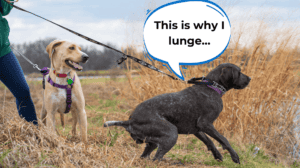
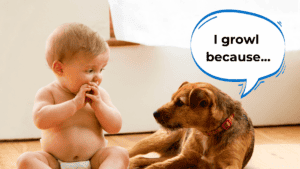



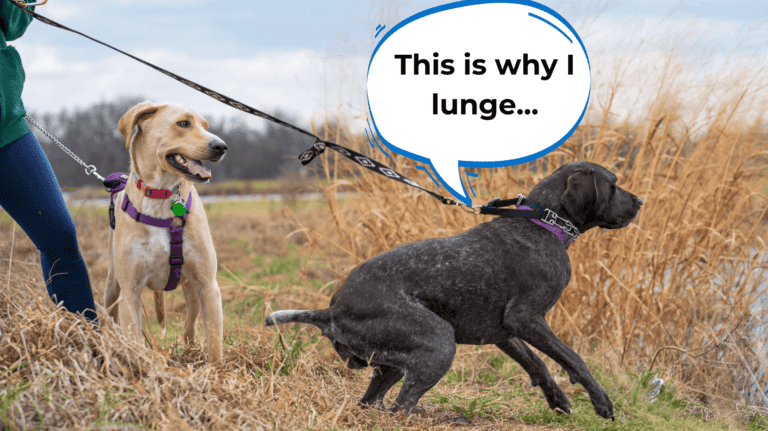
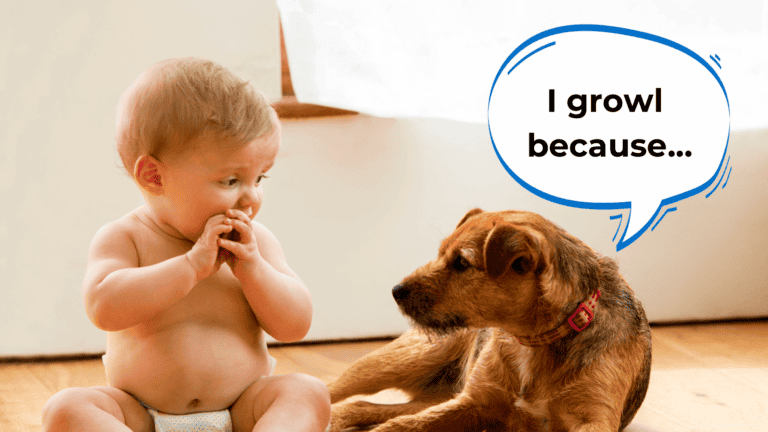
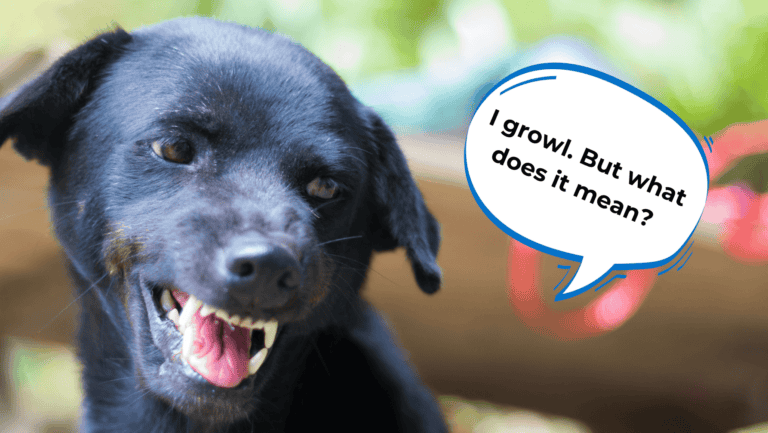

25 Responses
I clean a house where the owner has two beautiful Pittbulls on chains and live outside in their kennels. We are in Tasmania which is below freezing of a night so far this winter. I have put blankets, carpet even a $300 wooden underlay I wasnt using in one of them only to find them dragged out and torn to shreds the week later when I visit. I have bought them coats only to find the same as well. I’m not working there anymore, but I can’t stop thinking and worrying about them. I thought about going back to nail down some carpet, do you think this would help.
If you are concerned for their welfare you should contact your local authorities
My 8 week old male Shichon keeps biting and I’verun out Of ideas as to how I can help him stop.
Hi Shiela,
I have done a Blog & Podcast about this issue, so head to the link below to check out my advice. Good luck! Dan
https://theonlinedogtrainer.com/how-to-stop-puppy-biting-and-mouthing/
Thank you! Very helpful!
Glad you liked my Blog Jackie! Thanks for the feedback…Doggy Dan
I have a toy Poodle, a “ lap dog” which I love! He is 17 months old and I have allowed him into my “space” whenever I am seated. Is this why he barks ferociously when I take him out to potty, if he sees human or animal in there own yard.. he’s protecting propert and me? When we are out for a walk, he does not bark at other people or dogs…until we get back to our yard! Does he do that because I allow him into my lap when seated??
Hi Eloise,
It may not just be this one area alone where your poodle is gathering information about what his role is in his family, there are other equally important areas that allow for a lot of information to be conveyed. When it comes to barking at home versus away from your property, some dogs can feel far more protective of their home territory than they do out on a walk or further away from home….it’s all about the perceived level of threat, in a place where they should feel safe and secure.
Thanks for the post! Doggy Dan
I have another way to keep your dog warm. Get an old pair of pants and cut the legs off to the length of your dog. Cut down the center to create a long piece of fabric. sew on a button to the front. It is a wearable blanket! Your dog will like this way better than a sweater and it is for sure going to stay on your dog at night.
Great idea Olivia! I’m always in support of recycling and who doesn’t have an old pair of comfy tracksuit bottoms lying around. Best, Doggy Dan
I think my dog gets cold at night (despite sleeping in our bedroom on a woolen quilt) I would love to give him a blanket but he rips it off and chews it. Outside during the day, we tried to give him an off the ground bed (which he loves using inside) but he shredded it and does the same with other blankets and beds we have tried also. Any suggestions to teach him not to shred everything he can get his teeth on?
This is a pretty common issues and you would think that our dogs understand the blankets and beds are there for their own comfort! Dogs who are destructive and chew things can be motivated by anxiety, especially if it mainly happens when you are out of the house. They need somewhere to direct that anxious energy and the actions of chewing helps release feel-good hormones into their system to help calm them down. My website TheOnlineDogTrainer.com covers this issue. I’m certainly not saying this is what’s going on with your dog but it is important to look at the behaviour to see if there are any underlying behavioural issues. Some dogs do just like to chew! As long as your dog has somewhere they can get out of the cold weather and wind, then that may be the best option for your dog. There are pet beds on the market that claim to be indestructible, so you may like to look into those. Best, Doggy Dan
Thank you, Doggy Dan. I love getting these email and links. All the information is very helpful. I got Felix, my golden doodle at 10 weeks and he has been raised with the 6 golden rules. Everyone comments about how well-behaved he is (most of the time). Felix likes to sleep on the bare floor! – all year ’round. He loves cold weather! He’s only 20 months now, so maybe when he’s a little older I’ll try putting a sweater on him. No telling how that would be received, though.
Again, thanks. I’ve recommended your website to many dog owners.
Mary you’ve added a rule, there are only 5, but I would be really interested to learn what your 6th rule is haha! For dogs that live indoors with us it can be common for them to feel the heat a little more, generally because the temperatures we like to live in can be very different to their preference. Remember that many dog breeds have very effective warming systems by way of their natural coats. So if they have grown their full Winter coat and we have the heating on indoors, it can mean they may get a little hotter than they like. I think that if Felix generally feels the warmth a bit more then putting a dog coat on him may not be all that necessary. Thanks for recommending us! Best, Doggy Dan
I feel for the dogs I walk. They are chained up in a storage yard – with kennels but would love to have them feeling snug in the winter. One is a Huntaway and dense have much body mass at all (plus she may at the time be pregnant!). The owners say that leaving a blanket in the kennels will attract dust mites and other irritants… that it is a ‘townie’ thing to do and it seems the dogs pull the blankets outside anyway. Any suggestions?
Hi Alex, this is a bit of a difficult issue to approach if the dogs are owned by other people. It is important that dogs living outdoors have shelter from the elements, plenty of fresh water and enough food to eat. It is a bit frustrating and upsetting when you feel that dogs are not being looked after as you would like them to, so if you are concerned then maybe having a chat to your local animal welfare authority would help clarify what the regulations are. In an ideal world the dog’s owners would take on-board your advice but that may not happen. Thanks for keeping an eye out for these dogs, best Doggy Dan
I just adopted an american pitbull terrier we named grace. she is amazing and i couldnt ask for a berrer puppy she is only 16wks right now but when she is older i will be training her to be my ptsd service animal. honestly it makes me sick to my stomach when i see dogs left outside, they belong inside with their family. people that dont understand this have absolutly no business having an animal. If i ever see an animal left outside in the cold (I live in new england, USA) you better believe im taking that pup and finding him a better home that deserves him/her. My gracie sleeps with my girlfriend and i everysingle night and i wouldnt have it any other way. also, huge thanks to doggy day for all the awesome info, I really appreciate your style, and all you have done for pups and their families
Thanks Christopher! I’m really glad you find the information I put out helpful. We don’t get the kind of Winter temperatures here in New Zealand that you guys get in the Northern hemisphere. I actually find it really hard to comprehend that level of cold, but keeping dogs warm and safe should always be a top priority for their owners! Best, Doggy Dan
I bought a heated mat for my outside dog, but she will not go on it. Any suggestions on how to get her to eat on it?
Hi Lisa,
What a very lucky dog! Some dogs find extreme temperatures, like heat or cold, an unusual sensation on their paws and so it can help to provide something to insulate them. It may help to place an old towel or rug over the heated mat so that it dulls the warmth a little. If your dog has a favourite blanket then placing this over the mat might work really well. Just be careful there is no risk of it causing a fire etc, as some mats are not designed to be covered. Other than that if you use treats to encourage your dog to sit on the mat then it will create a more positive association for her. Sometimes making too big a fuss about having a dog lay on the mat can actually make them avoid it even more, so it may be best to let her work it out herself. Best, Doggy Dan
We used to have to get up several times during the night to tuck a blanket around my service dog until I finally convinced my husband that he was indeed cold so we should try letting him sleep with us so that now we all sleep all Night . The dog knows not to touch my sore legs but claims his part of the bed if he is cold.
Hi Rosalind, glad you found a solution that works for you all! Having a dog sleep on your bed is absolutely not a problem as long as you have invited them up rather than them claiming that space at will. I generally advise clients to get settled in bed first and then call their dog up. Sounds like you have one very amazing dog! Best…Doggy Dan
If a person insists on leaving their dog outside in inclement weather with little or no shelter, they simply do not deserve to have the love and companionship of a dog. Simple as that. Dogs are pack animals and what is the point of having one if you aren’t willing to let them be part of your pack?
I must admit I too see my dogs as part of the family…
Sometimes on very cold nights I will actually get out of bed and go into the lounge where it can get cold in the winter to put the blankets over the dogs again! The funniest thing is the appreciation I get is incredible so its all worth it. A couple of my dogs seem to have learnt the art of pulling their own blankets over themselves – I’ve never seen them do it but I know it happens !
I have a shelter rescue that has short hair… I don’t think I’d ever had a dog with short hair before.. he is a St.Bernard (25%) mixed with German Shepherd (42%) and Australian Shepherd (25%) with only 7% Basset Hound.. it seems the short hair is dominant and he ended up with short German Shepard hair and no undercoat. He gets cold a lot!!! It took us yonks to figure out that when he was scratching around in the bed ripping up the sheets he was just cold and wanted to be tucked in under the down comforter. Now we know to cover the monster up and he’ll sleep for hours. I always thought coats were for small dogs but my Peaches is 80 pounds and loves his coats!! Living in an RV is tough and the heater only raises the temperature 12% from what the outside temps are.. so we need our 2 dogs in bed to keep us warm in the Winter. The second dog has short hair but he’s mostly American Stafordshire Terrier mixed with a little Golden Retriever and Springer Spaniel so doesn’t seem to get as cold. He still loves getting under the covers with the rest of us during these windy Winter nights in Long Beach Washington.